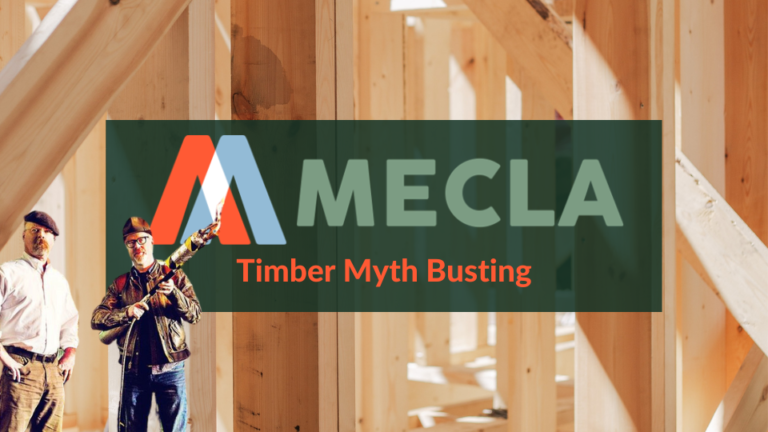
MECLA Spotlight on Timber Myth Busting
Engineered timber is a regenerative resource, sequesters carbon and offers a low embodied carbon solution to the decarbonisation challenges faced by the built environment. As such, it is expected to see increased uptake over coming decades. Whilst it has immense potential for application in lower carbon projects, the sourcing of responsible timber in Australia is not without its own challenges.
Timber has a diversity of use cases, and is already used commercially both structurally and in fit-outs. However, there are still many barriers that exist to the uptake of more timber in construction in Australia. Often, these barriers are misperceptions: does sustainable forestry still cause deforestation? Are there supply challenges? What is the fire risk and insurability of timber buildings? And is carbon stored in wood emitted at end of life?
The MECLA Spotlight Timber Myth Busting takes aim at misperceptions around engineered timber. Four experts confront four myths about engineered timber, followed by a panel discussion and Q&A with the audience. The session is hosted by MECLA WG5f Chair Stephen Simpson, Design Director at Mulpha International.
This Spotlight on Timber Myth Busting is part of a growing body of MECLA work investigating different perspectives and understandings of the timber industry in Australia. Other presentations looking at carbon sequestration and timber products can be found on our website.
Speakers:
- Matt de Jongh – Sustainability Manager at Responible Wood
- Tim Woods – Managing Director at IndustryEDGE
- Karl-Heinz Weiss – Director at Weiss Insights
- Steve Mitchell – Principal Consultant at Thinkstep
Key Takeaways:
- Responsible Wood’s runs PEFC, two standards, one for sustainable forest management and one for chain of custody. Both are underpinned by the Montreal Process – a criteria of indicators for the conservation and management of temperate and boreal forests.
- Engineered timber products are primarily sourced from plantation and softwood forests. However, hardwood timber, flooring, and dicking is primarily sourced from Native Forests in Australia.
- Engineered wood products are often created from offcuts and plantation forests, so meeting demand may be less challenging than people believe. Engineered wood products are part of the move to modular and prefab housing design.
- There is a mispercention in Australia that timber buildings are not insurable, and that fire risk is larger than the reality. We need a capability and competency uplift in order to gain confidence in building and insuring timber buildings.
- 59% of Engineered wood products are disposed in landfill, and because of the climate very low amounts of the carbon captured in the wood actually degrade and release back into the atmosphere.
- Despite having some of the strictest forestry regulations in the world, Australian forestry still negatively impacts biodiversity and old growth forests. More work needs to be done in order to ensure that demand for wood products does not drive malpractice in the sourcing of low carbon timber products for construction.